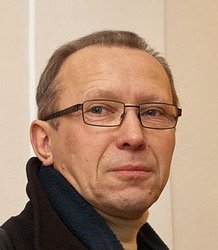IASS-AIS Collegium members, June 2017
Myrdene Anderson
 Associate Professor of Anthropology, Linguistics, and Semiotics,
Associate Professor of Anthropology, Linguistics, and Semiotics,
Purdue University, Indiana, USA
myanders@purdue.edu
Education
1978 PhD, Anthropology, Yale University
1970 MPhil, Anthropology, Yale University
1968 BA, Anthropology, University of Hawaii
Current Rank
1986-Present, Associate Professor of Anthropology, Linguistics, and Semiotics
Most Important Publications
2016 West, Donna E., and Myrdene Anderson, editors. Consensus on Peirce’s concept of habit: Before and beyond consciousness [Studies in Applied Philosophy, Epistemology, and Rational Ethics, 31 (SAPERE).] New York: Springer.
2012 Anderson, Myrdene. “Birthing prepositional logics.” In Gatherings in biosemiotics, edted by Siver Rattasepp and Tyler Bennett. (Tartu Semiotics Library 11.) Tartu: Tartu University Press, pp. 47-51.
2012 Anderson, Myrdene. “How qualification and quantification meet, or don’t, in ethnography.” In Semiotic and cognitive science essays on the nature of mathematics, edited by Mariana Bockarova, Marcel Danesi, and Rafael Núnez. (Interdisciplinary Studies on the Nature of Mathematics, 1.) Munich: Lincom Europa, pp. 296-329.
2011 Gorlée, Dinda, and Myrdene Anderson. “Kenneth L. Pike’s semiotic work: Arousing, disputing, and persuading language-and-culture.” The American Journal of Semiotics 27.1-4: 227-239.
2004 Anderson, Myrdene, editor. Cultural shaping of violence: Victimization, escalation, response. West Lafayette: Purdue University Press.
1999-2000 Anderson, Myrdene. “Ethnography as translation.” Athanor (Semiotica, Filosofia, Arte, Letteratura) 10.2: 181-187.
1991 Anderson, Myrdene, and Floyd Merrell, editors. On semiotic modeling. Berlin and New York: Mouton de Gruyter.
Karin Boklund-Lagopoulou
 Professor Emeritus, School of English
Professor Emeritus, School of English
Aristotle University of Thessaloniki, Greece
boklund@enl.auth.gr
Karin Boklund-Lagopoulou (b. 1948) received her doctorate in Comparative Literature in 1976 from the University of Colorado at Boulder. In 1981 she joined the faculty of the School of English at Aristotle University of Thessaloniki in Greece, where she taught medieval literature and literary theory until her retirement in 2015; she is now Professor Emeritus. Her research interests include medieval literature and semiotics, particularly narrative theory and textual analysis; she has also published work on popular culture, an interest that stems from the frequent presence of medieval motifs in fantasy literature, science fiction, film and television. Her publications include a monograph, I Have a Yong Suster: Popular Song and the Middle English Lyric (Four Courts Press, 2002), and papers on literary theory, popular culture and medieval literature published in Greek, European and American journals and collective volumes. She frequently collaborates with her husband; they have co-authored Meaning and Geography: The Social Conception of the Region in Northern Greece (Mouton de Gruyter, 1992) and together with Mark Gottdiener co-edited the anthology Semiotics (Sage Benchmarks in Social Research Methods, 2003). Their latest publication is Theory of Semiotics: The Tradition of Ferdinand de Saussure (in Greek, 2016).
Jacques Fontanille
 Professor Emeritus & founder of Centre de Recherches Sémiotiques,
Professor Emeritus & founder of Centre de Recherches Sémiotiques,
Université de Limoges, France
Holder of the Chair of Semiotics, Institut Universitaire de France
jacques.fontanille@unilim.fr
Jacques Fontanille is a French semiotician who is one of the main exponents of the Paris School of Semiotics. He has authored or co-authored ten books and a number of articles or book chapters whose topics span theoretical semiotics, literary semiotics, and semiotics of the visual. A former student and collaborator of the founder of the Paris School of Semiotics, A. J. Greimas, Fontanille is one of the main continuators of Greimas’ research program as he collaborated with him in his last published works, and assisted him in the administering and organizing of the Inter-Semiotic seminar at the École des Hautes Etudes en Sciences Sociales (EHESS) in Paris. After Greimas’ death, the course continued under Fontanille’s mantle until it became his own seminar at the Institut Universitaire de France. He holds Doctor’s degree in 1979 and Ph.D. in semiotics in 1984, a lecturer at Limoges in 1987, where he created a Linguistics department. Associate Profesor of Modern Languages in 1992, taught in Poitiers and Limoges, and the University of Limoges. He is now an honorary member of the Institut Universitaire de France (Chair of Semiotics). Professor and Président (2005–2012) at the Université de Limoges in France, where he teaches courses in Linguistics, Semiotics, Stylistics, and Rhetoric. He is a Senior Member of the Institut Universitaire de France. With Greimas, Fontanille elaborated a semiotics of the passions. With Claude Zilberberg, he developed a tensive semiotics. His most recent books include Sémiotique du discours (2003), Soma et séma (2004) and Semiotics Series (2006). He is also Honorary President of the International Association of Visual Semiotics and the French Association of semiotics. He is the author of over 220 publications in the fields of theoretical semiotics, literary semiotics and visual semiotics, rhetoric and general linguistics.
Dinda L. Gorlée
 Dr., Research Fellow, Wittgenstein Archives
Dr., Research Fellow, Wittgenstein Archives
University of Bergen, Norway / The Netherlands
gorlee@xs4all.nl
Dinda L. Gorlée (http://www.dindagorlee.com/) is a semiotician of applied linguistics (Peirce, Jakobson, Wittgenstein) and a translation theoretist in the areas of philosophical, musical, and legal translation. With a dual PhD in translation theory and semiotics from the University of Amsterdam, Gorlée has worked as Visiting Professor of semiotics and translation theory at the Universities of São Paulo, Amsterdam, Vienna, Innsbruck; her last academic function was at the University of Helsinki. Gorlée is Associate Editor of American Book Review at the University of Houston, Victoria, TX. Gorlée has been a general linguist at the Wittgenstein Archives of the University of Bergen. Invited by Thomas A. Sebeok, she was Research Associate of the Research Center for Language and Semiotic Studies at Indiana University in Bloomington, IN and worked at the Peirce Edition Project in Indianapolis, IN. She has been a member of the International Association of Semiotic Studies (IASS) since 1979. Gorlée has founded the Norwegian Association for Semiotic Studies and was the first President of the Nordic Association of Semiotic Studies (NASS). She has been member of the Board of the Dutch Association of Semiotics and is IASS national executive for the Netherlands. Dinda L. Gorlée is Series Editor for book series Semiotics: Signs of the Times published by Brill Publishers. Her recent books include: Wittgenstein in Translation: Exploring Semiotic Signatures (2012), From Translation to Transduction: The Glassy Essence of Intersemiosis (2015) and Wittgenstein’s Secret Diaries: Semiotic Writing in Cryptography (2020).
Claudio Guerri
 Consultant Professor, Facultad de Architectura, Diseño y Urbamnismo
Consultant Professor, Facultad de Architectura, Diseño y Urbamnismo
Universidad de Buenos Aires
Director of Research Program: Semiotics of Space-Design Theory
claudioguerri@gmail.com
Born in Rome, Italy, in 1947. He is an Architect, Researcher, Doctor and former Professor of Morphology I-II-III and Semiotics of Architecture at the Faculty of Architecture, Design and Urbanism of the University of Buenos Aires –FADU-UBA–, where he is currently teaching Semiotics for doctorate students. He also teaches Applied Semiotics at the Universidad Nacional del Litoral –FADU-UNL– for Graphic Design students, and at the Universidad Nacional of Tres de Febrero –UNTREF– for Electronic Arts students. He is director of CfG & Asoc., consulting in semiotic research. His doctorate thesis “De la Teoría de la Delimitación al Lenguaje Gráfico TDE” (2009), about the construction of the third graphic language, was directed by Juan Magariños de Morentin and Tomás Maldonado, and published in 2012. His main area of interest is research in Morphology and Graphic Languages and the development of methodologies and models of applied semiotics for qualitative research, areas in which he has published more than 100 works in five languages. Major publications include articles like “Architectural design, and space semiotic in Argentina” in The Semiotic Web 1987 (Sebeok and Umiker-Sebeok, eds., 389-419. Berlin: Mouton, 1988); “Gebaute Zeichen: Die Semiotik der Architektur” in Die Welt als Zeichen und Hypothese (Uwe Wirth, ed., 375-389. Frankfurt: Suhrkamp, 2000); “Nonágono semiótico: un ícono diagramático y tres niveles de iconicidad” (deSignis 4, 2003, 157-174. Buenos Aires: Gedisa-FELS); “A Comprehensive Treatment of Color, Submitted to the Semiotic Nonagon II” with William Huff in Color: ciencia, artes, proyecto y enseñanza (Caivano and López eds., 191-202. Buenos Aires: Nobuko, 2006); “La manumisión de las imágenes” with Acebal, Bohorquez Nates and Voto (Lexia 17-18, 71-90, Turin: Aracne); “The Semiotic Nonagon: Peirce´s Categories as Design Thinking” in The Bloomsbury Companion to Contemporary Peircean Semiotics (Anthony Jappy ed., 277-301, London: Bloomsbury, 2019); and books Lenguaje gráfico TDE. Más allá de la perspectiva (Buenos Aires: EUDEBA, 2012); Nonágono Semiótico. Un modelo operativo para la investigación cualitativa (Guerri et al., Buenos Aires: EUDEBA, 2016, 2nd. edition). He is or was a member of the Executive Committee of several international scientific societies–IASS-AIS; FELS; ISIS-Symmetry; IAVS-AISV; IASSp–, Argentinean national societies –SEMA, AAS– and editorial societies –deSignis, EUDEBA, ARTINF, Cuadernos de la Forma.
Jean-Marie Klinkenberg
 Professor Emeritus, University of Liège, Belgium
Professor Emeritus, University of Liège, Belgium
Member of the Académie Royale de Belgique
jmklinkenberg@ulg.ac.be
Born in Verviers (Belgium) in 1944, Jean-Marie Klinkenberg is professor emeritus at the University of Liège (Belgium), where he held the Chair of Semiotics and Rhetorics. He has done research in the sciences of language, areas in which he has published nearly 700 works translated into twenty languages (e.g. Précis de sémiotique générale, 2000). He has contributed to renewing the rhetoric within the interdisciplinary team known as Groupe μ, the collective author of A General Rhetoric (1970), A Rhetoric of Poetry (1977) and several works in visual semiotics (A Treaty of Visual Signs, 1992) who, more recently, has helped to shape semiotics in a cognitive and social orientation (Principia Semotica, 2015). He is Chairperson of Signata: Annals of Semiotics, has been president of the International Association for Visual Semiotics four times and represents Belgium on the International Advisory Board of the International Association for Semiotic Studies. He is also specialized in sociolinguistics (La langue dans la cité, 2015) and in the sociology of the francophone cultures (Périphériques Nord, 2010). He has held numerous visiting professorships on the five continents. He has received honorary doctorates from several foreign universities and is a member of the Royal Academy of Belgium.
Kalevi Kull
 Professor in Biosemiotics, Department of Semiotics
Professor in Biosemiotics, Department of Semiotics
University of Tartu, Estonia
kalevi.kull@ut.ee
Kalevi Kull is an eminent biosemiotics professor at the University of Tartu, Estonia. He was the president of the Estonian Naturalists’ Society in 1991–1994.
Graduated with a degree in biology from Tartu University in 1975, From 1992-1998 is Professor in ecophysiology, Tartu University. Full Profesor at University of Tartu, Faculty of Philosophy, Institute of Philosophy and Semiotics, Department of Semiotics since 2007. 1991-94 President of the Estonian Naturalists’ Society; Member of the board of J. v. Uexküll Center Member of international committee; Member of the board of K. E. v. Baer House; Member of the international board of World Cultural Council.
Alexandros Lagopoulos
Professor Emeritus, Schoo l of Architecture
l of Architecture
Aristotle University of Thessaloniki, Greece
Corresponding Member, Academy of Athens
phaidon@arch.auth.gr
Alexandros Ph. Lagopoulos (b. 1939) is Professor Emeritus of Urban Planning at Aristotle University of Thessaloniki, Corresponding Member of the Academy of Athens and Honorary Doctor of Urban Planning and Semiotics of the New Bulgarian University of Sofia. He has a postgraduate diploma in Urban Planning from the Centre de Recherche d’Urbanisme in Paris, where he also studied Urban Geography at the Ecole Pratique des Hautes Etudes en Sciences Sociales. He holds a doctorate in Urban Planning and a post-doctoral academic title (Habilitation) in Urban and Regional Planning from the National Technical University of Athens, as well as a PhD in Social Anthropology from the Sorbonne. He has served as vice president of the IASS-AIS and is honorary president of the Hellenic Semiotic Society and the Association Internationale de la Sémiotique de l’Espace. His research interests include urban and regional planning theory, the epistemology and political economy of space, social semiotics, the anthropology of space and the semiotic spatial models of precapitalist and contemporary societies. Major publications include Structural Urbanism: The Settlement as System (in Greek, 1973); The City and the Sign: An Introduction to Urban Semiotics (ed. with M. Gottdiener, Columbia University Press, 1986); Urbanisme et sémiotique dans les sociétés pré-industrielles (Anthropos, 1995); Heaven on Earth: Rites of Sacralisation of the Traditional Greek Settlement and Their Origin (in Greek, 2003); A History of the Greek City (ed., in Greek, 2004; English trans Archaeopress, 2009); and The Symbolism of Space in Ancient Greece (in Greek, 2012). He often collaborates with his wife, Karin Boklund-Lagopoulou; they have co-authored Meaning and Geography: The Social Conception of the Region in Northern Greece (Mouton de Gruyter, 1992) and together with Mark Gottdiener co-edited the anthology Semiotics (Sage Benchmarks in Social Research Methods, 2003). Their latest publication is Theory of Semiotics: The Tradition of Ferdinand de Saussure (in Greek, 2016).
Göran Sonesson
 Professor of Semiotics & Director of Centre for Cognitive Semiotics
Professor of Semiotics & Director of Centre for Cognitive Semiotics
Division of Cognitive Semiotics, Centre for Language and Literature
Lund University, Sweden
goran.sonesson@semiotik.lu.se
Göran Sonesson (b. 1951) is Professor of semiotics and Director of the Division for Cognitive Semiotics at Lund University. He obtained his doctorate in general linguistics from Lund University in 1978, and, in the same year, in semiotics from École des Hautes Études en Sciences Sociales. His dissertations were concerned with placing language and gesture, respectively, within a wider semiotical framework building on phenomenology and the psychology of perception. The major part of his research has been concerned with the semiotic study of pictures, which he has treated from a theoretical standpoint, starting out from a phenomenological perspective, and empirically, the latter in more recent decades also in experimental form. In his book Pictorial concepts (1989), he has presented the only full refutation extant of the critique of iconicity, as formulated by Eco, Bierman, and Goodman, while also reviewing critically the work on the plastic and iconic layers of the pictures due, notably, to the Greimas school and the Liege group of semiotical rhetoric. His minor speciality, since the last decade of the 20th century, has been a reinterpretation of the semiotic of culture as understood by the Tartu school, connecting it to the phenomenological distinction between Homeworld and Alienworld. In recent years, he has been involved with the theory of cultural evolution, in the guise of a critique of socio-biology, and as an extension of cultural semiotics, as well as with the epistemological and methodological foundations of cognitive semiotics, which aims to bring together the advantages of semiotics and the cognitive science, critically uniting their concepts and methods. He has written numerous articles in well-known semiotic journals and anthologies, and he has also published papers in psychological and sociological journals. He was a founding member of the International Association for Visual Semiotics and the International Association for Cognitive Semiotics.
Peeter Torop
 Professor of Cultural Semiotics
Professor of Cultural Semiotics
Head of the Institute of Philosophy and Semiotics
University of Tartu, Estonia
peeter.torop@ut.ee
Peeter Torop is an Estonian semiotician. Following Roman Jakobson, he expanded the scope of the semiotic study of translation to include intratextual, intertextual, and extratextual translation and stressing the productivity of the notion of translation in general semiotics. He is a co-editor of the journal Sign Systems Studies, the oldest international semiotic periodical, the chairman of the Estonian Semiotics Association and professor of semiotics of culture at Tartu University. He is known in translation studies above all for his PhD dissertation Total translation, published in Russian in 1995, and in Italian in 2000 (1st edition) and 2010 (2nd edition), edited by Bruno Osimo.
Henry Yiheng Zhao
 Professor of Semiotics and Narratology
Professor of Semiotics and Narratology
Director, Institute of Semiotics & Media Studies (ISMS)
College of Literature & Journalism,
Sichuan University, Chengdu, China
zhaoyiheng2011@163.com
(Henry) Yiheng Zhao (1943-) Professor of Semiotics and Narratology at the College of Literature & Journalism, Sichuan University, Chengdu, China, currently Director of ISMS (the Institute of Semiotics & Media Studies), Chairman of the Academic Committee of ACCS (The Association of Chinese Communication and Semiotic Studies), and member of the Collegium of IASS (The International Association of Semiotic Studies). He graduated from Nanjing University (BA 1968), the Graduate School of the Academy of Social Sciences (MA 1982), and University of California, Berkeley (PhD 1987). He taught at the School of Oriental & African Studies, University of London, for almost 20 years before resettling in China in 2005. His specializes in formal studies of art, literature and culture. Since the late 1970s, he has written two dozen books and around 250 essays on those topics. His major works in English include The Uneasy Narrator (1994), Toward a Modern Zen Theatre (2001), and in Chinese The Muse from Cathay (1983), Semiotics of Literature (1984), Comparative Narratology (1994), The Lure of the Other Bank (2003), Semiotics: Principles and Problems (2011), A General Narratology (2013), and Philosophical Semiotics (2017). Some of his works were republished in his 8-volume Selected Works (2013). He is also the editor of Signs & Media, a bilingual journal published since 2008, and of the monthly e-zine Bulletin of Semiotics and Media Studies. The book series Contemporary Semiotics under his editorship has published, since 2010, around 30 books by western authors translated into Chinese, and 40 books authored by Chinese semioticians themselves.
